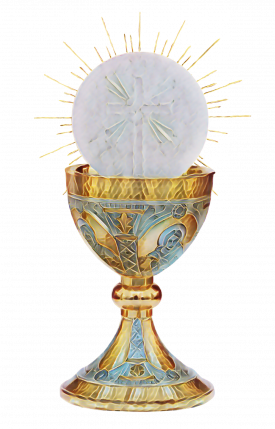 “The kingdom of heaven may be likened to a man who sowed good seed in his field. While everyone was asleep his enemy came and sowed weeds all through the wheat, and then went off” (Mt 13:24–25).
“The kingdom of heaven may be likened to a man who sowed good seed in his field. While everyone was asleep his enemy came and sowed weeds all through the wheat, and then went off” (Mt 13:24–25).
Our Lord’s imagery helps us make sense of difficult and painful situations existing within the Church. He is describing, afterall, the “kingdom of God.” If I’m honest with myself, I’m aware that there are weeds also growing in my heart. St. Paul understands the dramatic situation within the Christian, lamenting that “I do not do the good I want” (Rm 7:19). This is an apt description of the disciples of Jesus, called as we are to align our ways of thinking and living more closely to those of Christ the Teacher, a movement only possible when we cooperate with grace.
St. John Paul II described the greatest temptation we lay people face: the tendency to separate faith from life.[1] Of course, it’s quite clear that every baptized person faces this struggle. We can be too at ease, too comfortable, with both wheat and weeds existing in the heart. The problem, of course, explained in the immediately preceding parable in Matthew’s Gospel is this: weeds can have thorns, and thorns can choke, cause severe damage, and obstruct fruitfulness.
This drama is particularly vivid for anyone who teaches the faith. We can be so close to the Mystery of Christ, teaching it as we do, that we can tend to not remain before it in our own spiritual life. It can lose its power to confront and challenge us. Familiarity can breed passivity. Delete return here and bring up question below.
In this struggle against living a fragmented life, how does Holy Mother Church assist us?
Intently living the liturgical year is one way this division can be healed. With attentiveness to human nature, the Church wisely encourages us to encounter time through a Catholic worldview. Our years are ordered by the great Solemnities of Christmas and Easter. We spiritually prepare for these during Advent and Lent. And then, the joy of these celebrations is of such magnitude that the Church gives us an octave for each, with each of the eight days bringing us more deeply into the cause of our hope and joy as Christians. Throughout the year, we have lifted before us the presence and the example of the Blessed Virgin Mary and the great saints, who help us along the way by their radiant lives of radical discipleship. And, finally, the liturgical year draws to a close by helping us collectively ponder the end and the beginning—the Parousia.
Ordering time in this liturgical way forms us to see faith and life as integrally connected. In the liturgy, we can root ourselves within the broad embrace of another narrative, the story of Christ’s triumph within human history. Choosing to live life within this magnificent story gradually frees us from our limited, bifurcated ways of living and allows heaven to break into the ordinariness of each day. Living liturgically brings order and purpose to our way of seeing life.
Twentieth-century liturgical-catechetical scholar Josef Jungmann put it this way:
In the liturgy we do not philosophize about God, but we adore him. In the liturgy we do not attempt to analyze faith, hope and charity, but we practice them. In the liturgy we avail ourselves of the sacraments with holy reverence and we live as children of the Church. Although liturgy is not primarily concerned with educating us, but only with bringing us into union with God, it, nevertheless, tends to communicate to us those dispositions which are required by the whole of reality which gravitates around God and in this way forms Christian character so profoundly. All its values cast their rays harmoniously upon us. Order enters the soul; humility, reverence, esteem for everything holy and sublime pervade those who have surrendered themselves to God.[2]
Such an encounter happens in the liturgy when we join ourselves to the cycles of the liturgical year. By taking steps to live liturgically in our homes, our parishes, and our schools, each of us gains the capacity to see how our life fits into sacred history. And, in living this way, the One who gives meaning to all of history shows us for what we were made.
Dr. James Pauley is Professor of Theology and Catechetics at Franciscan University of Steubenville and has been appointed to the Executive Team for the Eucharistic Revival for the USCCB. He is also author of the newly revised Liturgical Catechesis in the 21st Century: A School of Discipleship (2022).
Notes
[1] John Paul II, Christifideles Laici, 2.
[2] Josef Jungmann, S.J., Handing on the Faith (New York: Herder and Herder), 98–99.
This article originally appeared on page 6 of the printed edition.
Art credit: Pixabay.com
